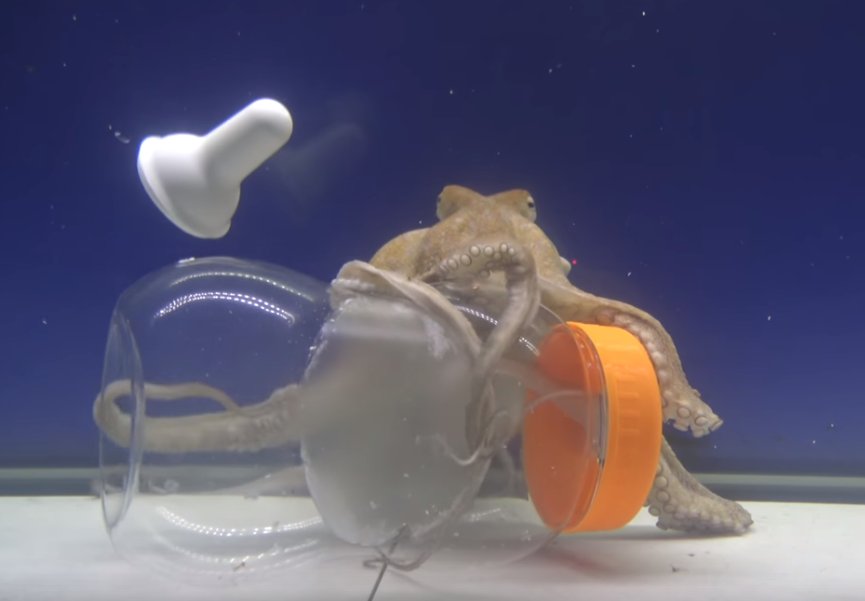One subject that appears quite often in Science Fiction novels and stories is the difficulty of trying to establish communication with an alien intelligent lifeform. In H. G. Wells’ ‘The First Men in the Moon’ Doctor Cavour tries to communicate with the Selenites by starting with geometric shapes, all intelligent creatures would recognize them after all. The same technique was used in the novel ‘Planet of the Apes’ (Of course in the movie they skipped that whole problem by having the apes speak perfect English!).

Some SF stories use a shortcut to get past this difficulty. In ‘The Day the Earth stood Still’ the alien Klaatu speaks perfect English because his people have been monitoring our radio and TV broadcasts while in the old ‘Star Trek’ series the crew of the Enterprise had a “Universal Translator” that allowed conversation with all kinds of alien lifeforms. The main plot of the recent movie ‘Arrival’ (2016) was actually about the problem of learning how to communicate with aliens.

The new novel ‘The Mountain in the Sea’ by Ray Nayler is also concerned with learning to communicate with an alien intelligence but this one is not extraterrestrial, and if you’re thinking chimpanzees or dolphins you’re wrong. The aliens in ‘The Mountain in the Sea’ are our planet’s most intelligent invertebrates, octopuses.


Set in the near future Doctor Ha Nguyen has been studying octopuses and other cephalopods her entire career. She has been sent to the island of Con Dao by a multi-billion dollar, International Corporation named DIANIMA to study the local octopus population in an effort to determine if they are beginning to develop the basics of a primitive culture. DIANIMA has turned the island into a into a nature preserve in order to protect the intelligent octopuses in a world on the brink of environmental collapse due to climate change, overfishing etc, etc. The only two other inhabitants of Con Dao are Altantseseg who is in charge of security for the preserve and Evrim, the world’s first, and by law only, android.

Of course the octopuses have developed not just the beginnings of culture but have a well developed language consisting of symbols that they cause to appear on their skin. Remember octopuses, along with other cephalopods, use chromatophores in their skin for camouflage. At the same time they can alter the very texture of their skin making it smooth like a stone or rough like sand or even bumpy like a piece of coral. In addition to a sophisticated language the octopuses in ‘The Mountain in the Sea’ have also mastered the making of primitive tools from sea shells and coral entering what Dr. Nguyen christens their ‘Sea Shell Age’.

It’s the work of Dr. Nguyen that is the central portion of ‘The Mountain in the Sea. Her discussions with the Android Evrim about the difficulty of understanding a creature with such different senses than we have are the crux of the story. Despite evolving on the same planet as us octopuses are true aliens with no real hard parts for structure, with eight tentacles, each of which has a rudimentary brain of its own and can behave semi-independently. In many ways they are creatures whose ‘umwelt’ see my post about the book ‘Immense World’ by Ed Yong, whose mental view of the world is so much different from our own. At the same time I have a feeling that the character of the android Evrim was added into the novel in order to show how difficult it could be to understand and communicate with a creature of our own making.

This subject of other animals here on Earth having the beginnings of culture is actually a hot topic right now. Over the last several decades considerable evidence has been discovered indicating different speech patterns, let’s not quite call it language, among different populations of dolphins, those in the Atlantic ocean as opposed to those in the Pacific or Indian oceans. The same appears to be true between Orcas who live close to the shorelines of the continents versus those who live in the deep ocean. And most interesting of all may be the fact that different populations of Chimpanzees in different areas of Africa not only differ in their vocal calls but even differ in their use of tools! (See my post of 16 March 2019).

There are subplots in ‘The Mountain in the Sea’ as well. The island is closely guarded by Altantseseg using a variety of lethal drones because of poachers who try to invade the reserve in order to plunder its resources, mainly fish. There is also another entity, corporation or nation state, which is trying to perform a hostile takeover of DIANIMA for unknown reasons. In fact some parts of ‘The Mountain in the Sea’ are almost written like a spy novel or conspiracy theory.

For the most part however ‘The Mountain in the Sea’ is a story about what it means to be an intelligent creature, to have a culture, a civilization. Because of that ‘The Mountain in the Sea’ is not an exciting book, not a novel for those who are looking for a lot of action. It’s a thought provoking book and when it sticks to that aspect of its story it does a good job. The spy stuff or the poacher part falls kind of flat however. Really ‘The Mountain in the Sea’ could have used one more edit to try to tighten up what are supposed to the action sections.

Nevertheless ‘The Mountain in the Sea’ is worth reading, both for its viewpoint on the harm we’re doing to our fellow creatures here on Earth as for its thoughts on communication.
